Clean as a Hound’s Tooth
By Rodger Barr, DVM
Fall 1998
If given the opportunity to alter this ‘nearly perfect’ breed of dog, the greyhound, what would you change? Perhaps you would wish for an abundance of fur on the thighs and chest, and no chance of becoming hypothyroid. Not a bad idea. What else? How about flexible bones that bend, but never break? Now we’re cooking! That would be great at the track as well as in adoptive homes. What would you think about the non-existence of separation anxiety? Just think about all the drool you’d be missing, not to mention other body by-products. All these improvements would be fine and dandy, but if given this rare opportunity, there is only one thing I would change: I would give this fabulous breed a perfect low maintenance set of teeth.
The reality of the situation is quite the opposite. This wonderful breed is eminently prone to a lifetime of dental disease. There are many hypotheses to explain the huge amount of painful, putrid, decaying plaque, which these mouths harbor (not to mention the gingivitis and pyorrhea). Suffice it to say that the combination of limited gnawing and chewing opportunities, combined with a high quality but stew-like diet, lends itself well to plaque formation at a very early age. Once the plaque has a chance to take hold, it can result in gum recession and concomitant gingivitis, infection, and ultimately, the untimely loss of teeth, often a large number of teeth.
Assuming that when your newly adopted family member arrives his or her oral cavity has been properly managed, the burden of care now lies squarely on your shoulders. If either you or your pet is reluctant to brush or be brushed, the inevitable will be halitosis and the need for regular dental prophylaxis, expensive veterinary bills, anesthesia risks, and the loss of non-replaceable teeth. All these are avoidable, but require unwavering commitment and dedication.
There are no shortcuts! Many gimmicks are available. Rawhides have value but can cause gastrointestinal upsets. Bones are good if your dog will chew them, but they can easily break or crack teeth. Milkbones, bones, t/d, etc. are helpful but cannot stand alone to win this battle. There is only one way to maintain a greyhound’s mouth and that is with a minimum of daily brushing. Twice daily is twice as good. Once a week is useless. Twice weekly is half as useless. A commonly used adage by your own dentist states: “Only brush the teeth you want to keep.” This is true for greyhounds also. Everyone has their own style of brushing and their own preference of brushes. It is best to use what you feel the most comfortable with. Make dental care a routine. Do it at the same time every day and DO IT WITHOUT FAIL. This is a very small price to pay for unconditional love, don’t you think?
